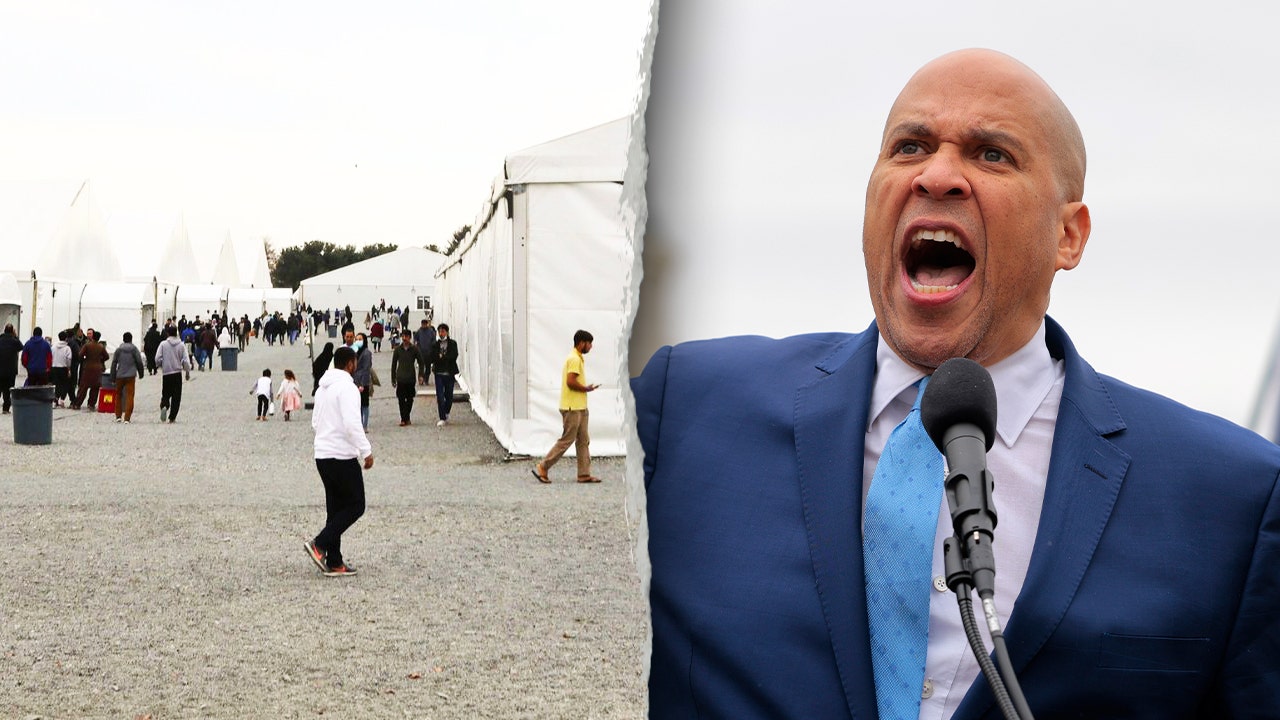Rodrigo Sandoval, 17, just graduated from high school in South Carolina. He gets excited when he talks about what he’d like to do — he’s interested in business administration, graphic design or joining the Navy — but his face becomes solemn when he talks about the future.
“I’ve noticed a lot of changes, especially in the Hispanic community. We live in constant fear of being deported, arrested and all that,” said Sandoval, who came to the U.S. at age 12, fleeing El Salvador due to gang violence that threatened his and his family’s life.
One of his earliest memories is when he was 5.
“It’s one of my traumas because they put a gun to my head. All I remember is crying out of fear,” said Sandoval, who is a beneficiary of the Special Immigrant Juvenile Status classification.
The SIJS classification, created by Congress in 1990 as part of the Immigration and Nationality Act, protects immigrant minors who have been victims of abuse, abandonment or neglect in their countries and gives them a path to permanent residency in the U.S. They must be under 21 or under 18 in some states, including South Carolina, where Sandoval lives.
Last month, the Trump administration ended a measure in place since 2022 that automatically issued the young immigrants work permits and protection from deportation as they waited for their green card applications, which can take years.
“Once they’re approved for special immigrant juvenile status, they’re put on a waiting list, which is currently very, very long. We typically tell clients it’ll probably take more than four or five years,” Jennifer Bade, an immigration attorney based in Boston said in an interview with Noticias Telemundo.
Now after changes under the Trump administration, work permit and Social Security applications must be processed separately, complicating the process for many young people because, in many cases, granting the applications depends on visa availability.
“It’s very strange that they’re in that category because SIJS is about humanitarian protection for young immigrants. There shouldn’t be visa limits for these young people,” said Rachel Davidson, director of the End SIJS Backlog Coalition, a nonprofit organization that advises SIJS recipients and proposes solutions to tackle the backlog in their green card applications.
Verónica Tobar Thronson, a professor at Michigan State University’s School of Law, said many of these young immigrants may not be able to get work permits or renew current ones. “If they don’t have a work permit or an ID, they can’t travel, they can’t enter a federal building, they can’t apply for a Social Security number — they also don’t qualify for student loans if they enroll in college, and in some states, they can’t apply for assistance with medical or social services because they don’t qualify for anything at all.”
In information sent to Noticias Telemundo, U.S. Citizenship and Immigration Services stated that foreign nationals from Guatemala, El Salvador and Honduras currently make up the majority of SIJS applicants, “and collectively represent more than 70% of all SIJS applications,” although they did not specify the total number.
USCIS stated to Noticias Telemundo that while it’s not rescinding protection from deportation from those who already have it, it has the “right to rescind the grant of deferred action and revoke the related employment authorization at any time, at its discretion.”
More than 107,000 young SIJS beneficiaries from 151 countries were on the waiting list to apply for a green card as of March 2023, according to data collected by groups such as the End SIJS Backlog Coalition and Tulane Law School’s Immigrant Rights Clinic.
Of the approximately 280,000 SIJS applications approved in the last 12 fiscal years, “more than 139,000 have been filed or approved for adjustment of status,” according to USCIS.
The current processing time for applications for the program (the SIJ I-360 form) is less than five months, according to USCIS. However, the annual visa cap creates a bottleneck because, regardless of the speed of SIJS processing, the number of visas issued remains the same.
Both Rodrigo Sandoval and his 20-year-old sister, Alexandra, have already been approved for SIJS but are on the waiting list to apply for permanent residency. Both Alexandra’s and her brother Rodrigo’s work permits expire in 2026, and according to their lawyer, they still have three to five years to wait before adjusting their status.
Though they currently have protections under SIJS, Alexandra is still worried about what could happen. “If the police stop us and ask for our documents, it’s all over because we risk being deported.”
Hiromi Gómez, a 17-year-old student with SIJS, said it took her nine years to get to apply for a green card, “and I still haven’t received it.” She worries about more recent young immigrants who will have a harder time securing protections due to recent changes.
Khristina Siletskaya is a South Carolina-based immigration attorney who, among other things, handles cases involving SIJS beneficiaries, including the Sandoval siblings. The Ukrainian-born attorney said that despite changes in U.S. immigration policies, “all hope is not lost.”
“This new change that everyone is talking about eliminated the automatic granting of deferred action (from deportation). However, the United States continues to approve cases of special immigrant juvenile status; that continues to operate normally,” the lawyer explained.
Siletskaya and other experts emphasize that the recent changes are a return to the past, because the automatic granting of deferred action and work permits was implemented in May 2022 but did not exist before. Attorneys for young people with SIJS are exploring other legal avenues to assist them in their search for protection.
“Does this mean young people can’t get Social Security? First, you can try the Department of Social Services. Often, you may be able to get Social Security, but it will indicate that you’re not eligible for work purposes,” Siletskaya said. “So young people could at least get emergency Medicaid, but that will depend on each state.”
Regarding work permits, the attorney said there are ways to try to obtain one. The first is to apply for one separately and ask USCIS to grant it. Siletskaya said she has several cases where they’ve initiated this process, but warns that she has not yet received a response in those cases.
Another option explored by attorneys is to obtain a work permit based on parole, since a young person with SIJS is often granted parole as they work to adjust their status and obtain a green card.
Following the recent changes to SIJS, a group of 19 lawmakers led by Sen. Catherine Cortez Masto, D-Nev., sent a letter to Homeland Security Secretary Kristi Noem expressing concern about the changes. The letter said it “leaves abused and abandoned youth in legal limbo while heightening their vulnerability to exploitation.”
In the letter, the members of Congress said they had received reports “of an increase in the number of detentions and deportations of SIJS beneficiaries.”
Cortez Masto and other Democrats introduced the Vulnerable Immigrant Youth Protection Act in Congress, seeking to change visa categories for SIJS beneficiaries and prevent delays in adjusting their status, among other things. But the lack of Republican lawmakers supporting it could hamper its passage.
The bill is still in its early stages of discussion in the Senate, according to Cortez Masto’s office, and members of Congress have not yet received an official response to the letter sent to Noem.
Both Siletskaya and other attorneys consulted by Noticias Telemundo recommend that young people with SIJS avoid taking risks and remain cautious.
“Don’t get into trouble. If you don’t have a driver’s license, let your friends drive. Stay discreet, respect the law, stay out of situations where you might be exposed, and wait until you receive your green card,” she said.
Despite immigration changes and other challenges, Rodrigo Sandoval said he wanted to make the most of every minute of his work permit, which expires next year. That’s why he has two jobs: He’s a barber and also works on construction sites to help his family.
“My message to people is to keep fighting and keep dreaming big. I don’t think there are limits because we as Hispanics are fighters. And this comes from other generations,” he said, getting emotional. “The truth is, what we have to do is not give up.”









